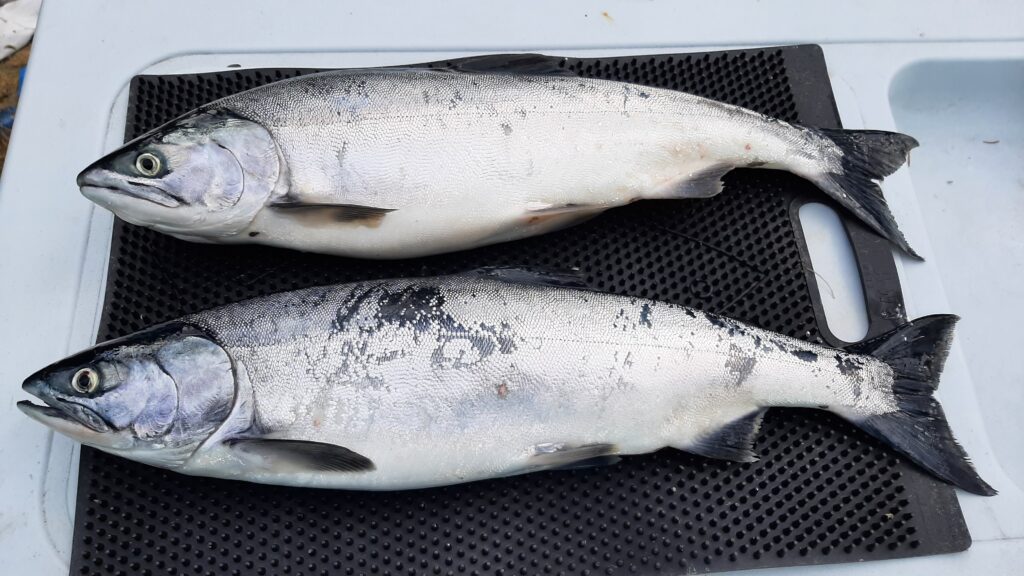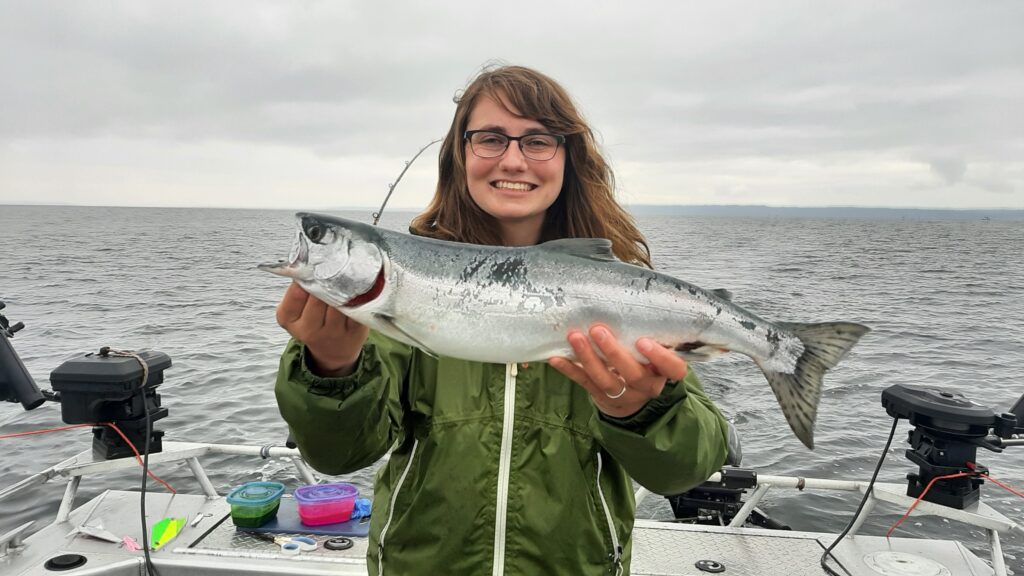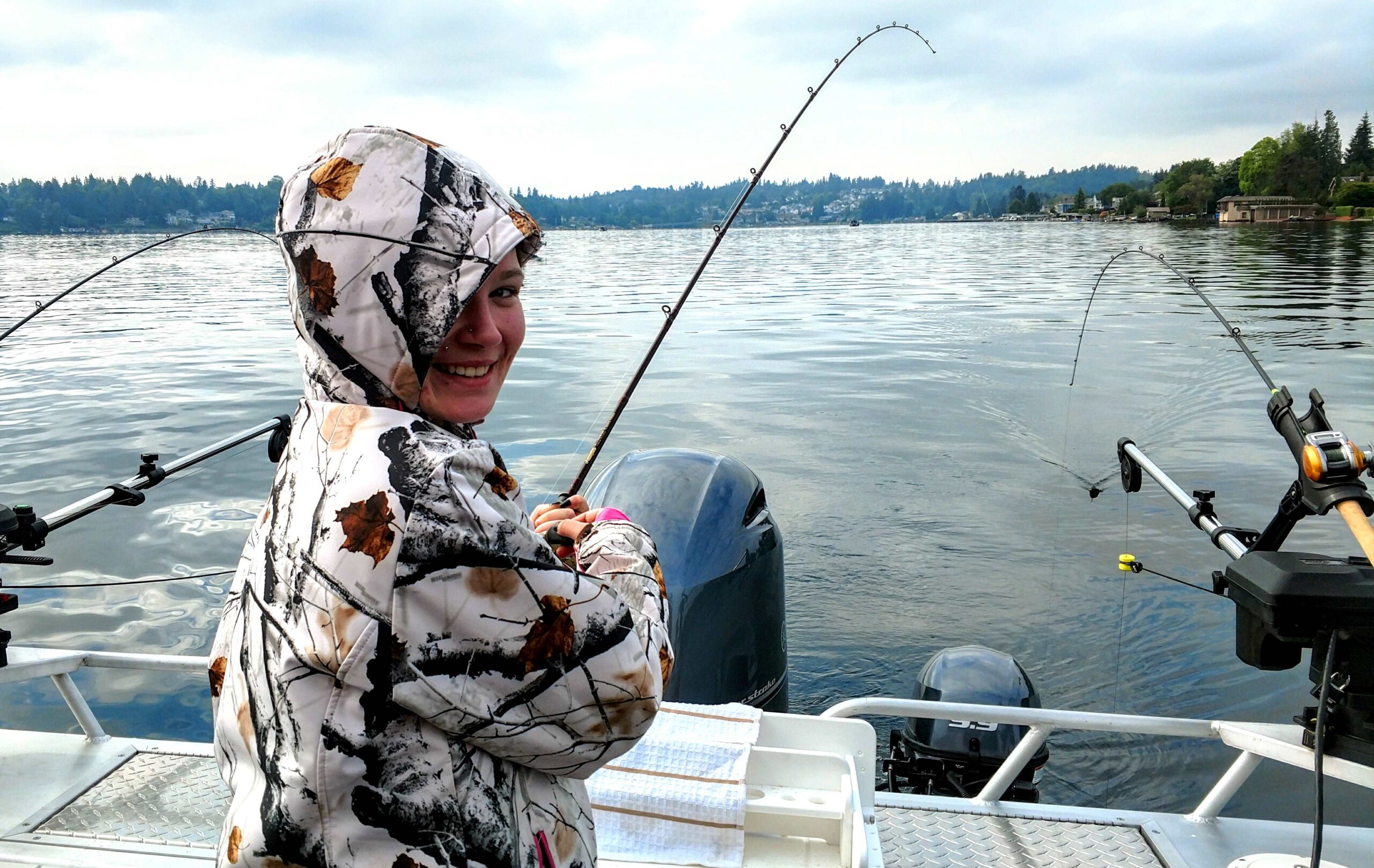Grab your rods and coolers, it’s time for Puget Sound coho! As far as saltwater salmon go, coho tend to be aggressive and eager biters. You can find them in most areas of the Sound, and the bite will only improve as the season progresses. Coho are plentiful and tasty! They taste good when caught in rivers, but you can’t beat a chrome coho fresh from the salt. Having the right strategy, the proper gear and good preparation will help you get a boatload of coho this summer!
Trolling is the most popular way to catch these Puget Sound coho. It’s a great way to cover water and adjust your depth based on the fish’s location. Having the right gear is certainly important, but having a good strategy makes all the difference. I recommend getting an early start and fishing shallow. As the day progresses, fish deeper. Watch for marks and don’t be afraid to drop your gear right down into the fish. Pay close attention to your fish finder.

Coho will school up most of the time, so don’t be afraid to circle back to wherever you get bites. Coho like a shorter setback than you’d think. I usually use a 50 to 75-ft setback. Trolling speed for coho can be a controversial topic. Speeds anywhere from 2.5 mph to 3.5 mph will work. Here again, is where having a fish finder is crucial. In addition, study tide tables ahead of time. It’s no secret that coho love a good tide change. Targeting tide changes early in the morning often results in a full cooler.
So, what gear do you need? There are several different ways to go. You can use trolling flies, herring, spoons, plugs, or spinners. Sometimes coho can be picky, so it’s best to employ a variety of lures. You’ll want to run your lures behind a flasher. Many different tackle companies make flashers that work well. Don’t forget to smear your flasher and lure with a bit of scent! Coho are smart and some scent can fool them into grabbing your lure a little longer. Most days, coho just can’t resist herring. They’re out there feeding before going into rivers to spawn, so they’re hungry! Don’t be afraid to add a herring strip to any lure. You can brine up herring strips ahead of time and attach them to hooks, tie herring bellies to your plugs, or stuff your plugs with herring and tuna. Some fishermen dye their herring during the brining process, others don’t.
Knowing the right spots to fish is an important part of your prep work that you should research ahead of time as well. The fish start flooding into the Sound through the Strait, so fishing will be best up north early in the season. My experience fishing for saltwater coho is within Marine Areas 9 and 11, so we will discuss those locations here. The oil docks, shipwreck, and Picnic Point are all well-known producers.

You can launch your boat at Edmonds, Mukilteo, and Whidbey Island. Just be mindful that you don’t accidentally cross into another Marine Area once you have fish on board. Sometimes you can keep wild fish in one area, but not in another. In Marine Area 11, common spots include the Yacht Club, Dash Point, and Browns Point. In both areas though, I’d caution against just following the crowd. Don’t be afraid to study maps and find your own spots. Points and bays are always good places to start.
Preparation is key! Make sure to check for emergency rules before heading out. Don’t forget to brine your bait ahead of time and grab ice to ensure your catch stays cool. Grab those life jackets and check the weather forecast. The Sound can turn nasty at the drop of a hat, especially for small boats. Preparation can make all the difference between a cooler full of coho and a day of disappointment. I’ll leave you with a story to help drive this point home.
One day, I was out on the Sound fishing for coho on Mike Carey’s boat with another friend. The day had started well- we got on the water at the crack of dawn and saw lots of fish on the meter. We started getting our 3 fishing rods set up when my friend said “Uh oh… I forgot my fishing license!” Mike and I immediately stopped setting up the 3rd rod and told my friend he was on boat-driving duty for the rest of the day. It went from a (potential) 6-fish day to a 4-fish day for us. Preparation is everything! Do your research, make a checklist, and give yourself plenty of time to get ready. Have fun and go catch a cooler of coho!





















